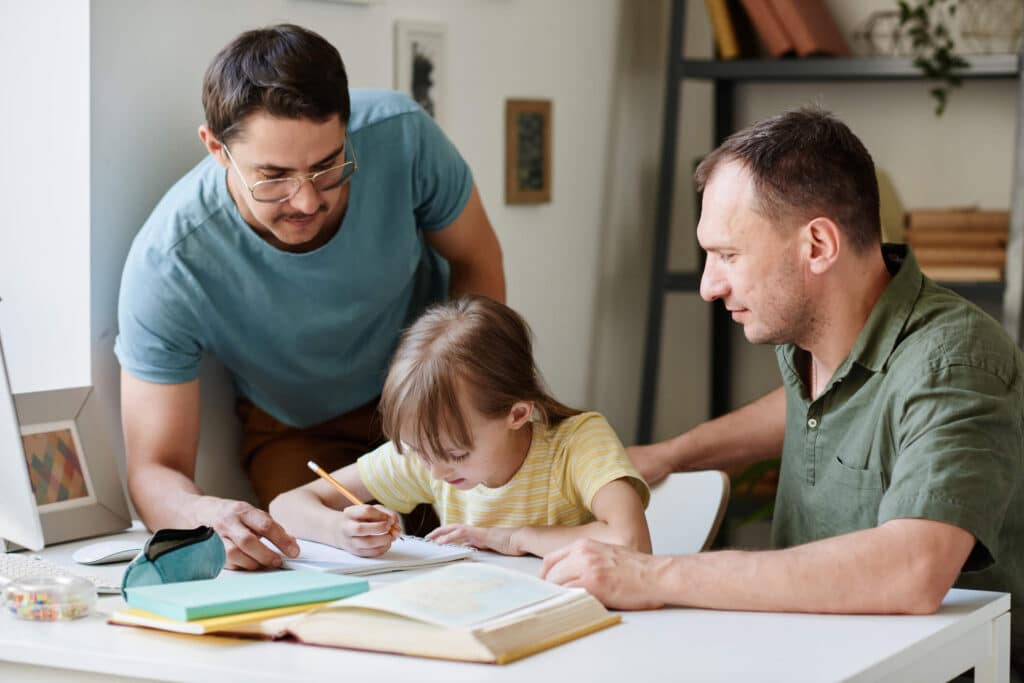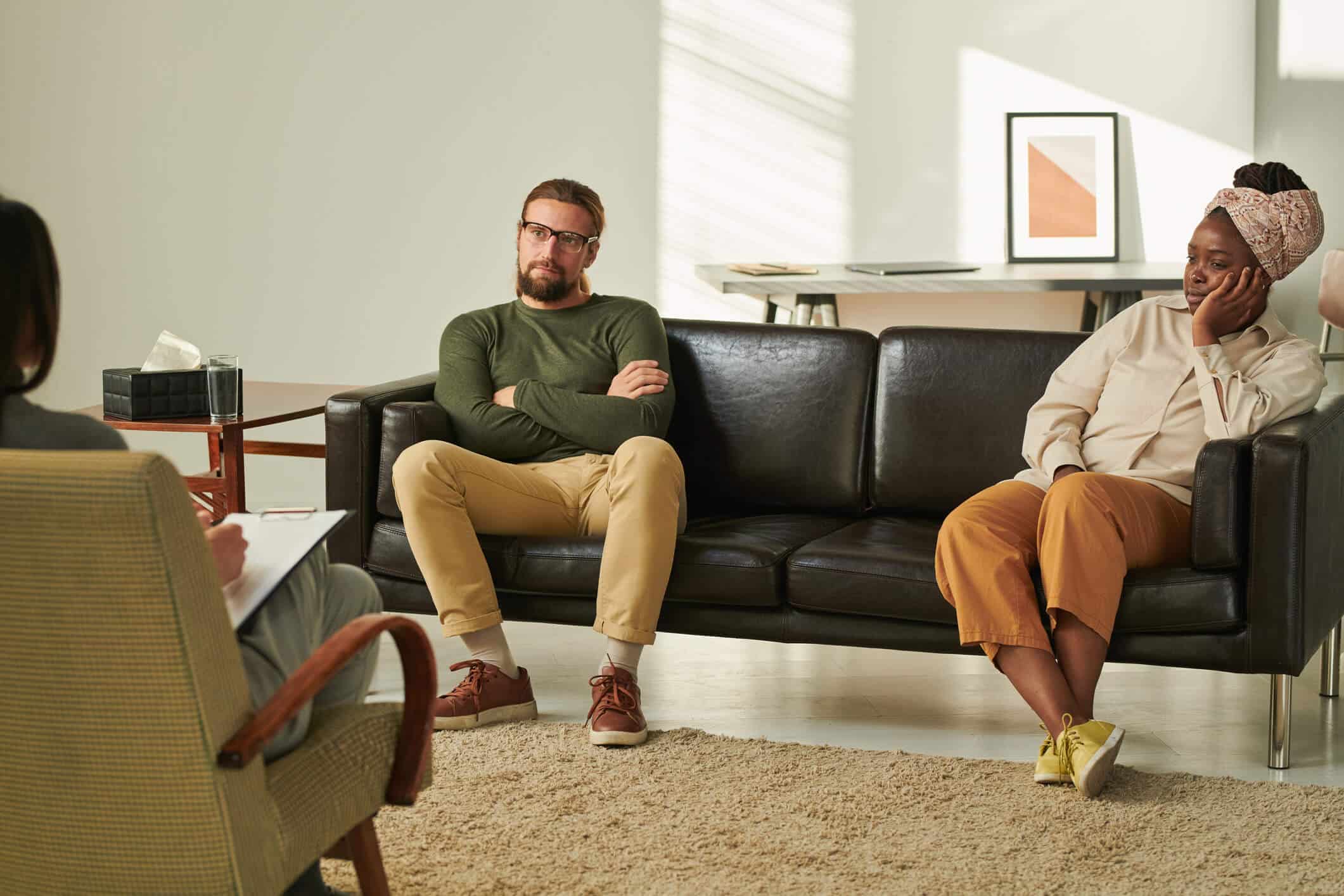Several theories have been formulated over the years about how children connect to their caregivers and what sets adults up for success in their relationships. One such theory is the attachment theory by John Bowlby and Mary Ainsworth. This theory explores how having your needs met as an infant can change how you relate to people throughout your life.
Understanding attachment theory can benefit mental health professionals who want to take a trauma-informed approach to treatment and support clients struggling with adult attachment in relationships. Keep reading to explore different ways to receive attachment training as a therapist and how being familiar with attachment theory can help you effectively assist your clients.
What Is Attachment Theory?
Attachment theory was first proposed in the 1950s by John Bowlby and later expanded on by Mary Ainsworth, his colleague. Bowlby and Ainsworth outlined four attachment styles infants and children could develop based on how effective their caregivers were at meeting their needs.
Those with a secure attachment style tend to have loving caregivers who offer organization, security, and consistency. In contrast, children who have parents who are avoidant, anxious, or unpredictable in their styles of love and care are more likely to develop an insecure attachment style. Around 80% of infants who are maltreated or abused develop a disorganized attachment style.
Attachment theory is often utilized to help explain the connection between traumatic childhood experiences and relationship problems in adulthood, but anyone can have an insecure or secure attachment style. Adults with insecure attachment styles may struggle in their intimate relationships without intervention and support and misunderstand why they partake in specific patterns. A therapist can be a guiding resource in helping these individuals form healthier relationships and a more secure attachment style.
If you are facing or witnessing abuse of any kind, the National Domestic Violence Hotline is available 24/7 for support. Call 1-800-799-SAFE (7233) or text “START” to 88788. You can also use the online chat.

What Are The Four Attachment Styles?
To understand and use attachment theory in your work, it can be crucial to have a solid understanding of the four attachment styles proposed by the theory, including the following.
- Secure Attachment Style
A secure attachment style often develops when an infant or child’s emotional and physical needs are met by their caregiver consistently. As adults, people with secure attachment styles may fit the following traits:
- An ability to easily set boundaries with others
- Interdependence (a mixture of independence and dependence)
- Assertive communication
- An ability to know when one can commit and when one isn’t ready
- Knowing when a relationship should end and being able to end it
- Work-life balance
- Trust and trustworthiness
- Honesty
- An ability to feel comfortable alone and with others
- Open-mindedness
- An ability to pick up on relationship “red flags” before a relationship starts
- Valuing many relationships, including friendships, family connections, and romance, instead of valuing one over the other
- Anxious Attachment Style
An anxious attachment style may form when an individual has an avoidant parent or caregiver who does not meet their emotional needs or only sometimes meets them. Anxious attachment is one of the three insecure attachment styles. Traits of an anxious attachment style can include the following:
- Fear of losing partners or being alone
- A fear of abandonment
- Difficulty accepting the boundaries of others
- Low self-esteem
- Difficulty being single
- Dependency on others for well-being
- Difficulty saying “no”
- Struggling to end a relationship or waiting for another person to leave instead of doing so yourself
- Difficulty trusting others
- Avoidant Attachment Style
An avoidant attachment style may form when an individual’s parent has an anxious attachment or depends on them for well-being. When the roles are reversed and a child is asked to attend to their parent’s needs instead of the other way around, they may struggle to understand their own emotions and respect the vulnerability of others. Below are some potential traits of those with an avoidant attachment style:
- Craving personal space most of the time
- Difficulty committing to romantic partners
- A lack of understanding of one’s own emotions
- Avoidance of one’s own emotions and the emotions of others
- Difficulty depending on others for support
- Having a pattern of short-term relationships
- Passive-aggressive communication
- Leaving people when they get too close
- Experiencing an emotional “shut-off” when a situation is too emotional
- Low self-esteem
- A fear of being truly known
- Trying to rationalize emotional situations
- Disorganized Attachment Style
A disorganized attachment style most commonly forms in those who have been abused or lived with a parent or caregiver with a disorganized attachment style. This style can often be found in individuals with conditions like post-traumatic stress disorder (PTSD) or borderline personality disorder (BPD). Those with a disorganized attachment style switch between avoidant and anxious tendencies, depending on the situation. Below are some of their other potential traits:
- “Splitting” behaviors (i.e., idealizing a partner one moment and demonizing them the next)
- A strong desire for close connection but simultaneous fear of obtaining it
- Anxious behaviors driven by the possibility of losing someone
- A desire to leave a relationship “first” to avoid emotional harm
- Inconsistency in behavior
- Difficulty accepting love and security from others
- “Self-sabotaging” behaviors
- Overlooking red flags in others to stay in a relationship
- Extremely low self-esteem
- Difficulty being truly vulnerable
- Difficulty trusting love
- Looking for signs of betrayal or rejection
- Feeling uncomfortable when a partner tries to be close
How To Use Attachment Theory In Your Work
Attachment theory can be beneficial for therapists in their practice because it can offer a unique look into relationships. Below are a few ways you can use this theory to support your clients.
- Learn The Role Of Attachment In Trauma Healing
Clients with PTSD or other conditions stemming from childhood attachment trauma or complex trauma may be more likely to experience an insecure attachment style. Disorganized attachment is the most common attachment style in those who have experienced early childhood abuse or neglect. Although all professionals may not accept attachment theory, the behaviors associated with disorganized attachment are common in mental health conditions that develop due to abuse, such as BPD or complex PTSD (C-PTSD).
Having a framework to understand these symptoms can help providers validate their clients’ experiences. In addition, if a client shares these patterns and behaviors with you in session, you may be able to discern whether an insecure attachment style is impacting their relationships.
- Understand That Attachment Styles Can Change
In some cases, people may believe that behavioral patterns in relationships can’t change due to a diagnosis or another challenge. However, research has shown that attachment styles can change. One study found that 46% of participants changed their attachment style after treatment, including those with a history of abuse in their infancy. Changes in attachment style were linked to an understanding of attachment theory, personal experience, and risk factors. Further, positive self-esteem and perceptions of social support were related to increased relationship security.
Some people may not be aware that they can change their patterns. As a therapist, you can show these individuals the research surrounding attachment styles and security and guide them in understanding their own behaviors. You can also help them improve their self-esteem and lead them toward more secure relationships with others, including friendships and family bonds.
- Learn The Dynamics Between Adults With Different Attachment Styles
People with different attachment styles often date each other. For example, anxiously attached people may subconsciously seek relationships with avoidant individuals due to the patterns they may have witnessed in childhood. In attachment-based couples therapy, a therapist can guide both clients in understanding how their attachment styles drew them to each other and how they can compromise and grow to get closer to relational security.
Where To Get Attachment Theory Training
If you’re interested in taking an attachment-based approach to therapy to support your clients in healing their attachment wounds, you might consider taking a few different steps, including the following.
Get Accredited In Attachment Therapy
Several online and in-person schools and courses offer attachment theory certification to professionals. If you’re looking to take a trauma-focused approach to attachment theory, the Trauma Research Foundation (TRS) offers a traumatic stress studies certificate program led by Dr. Bessel van der Kolk, author of The Body Keeps The Score. Upon completion of the 32-week program, you’ll receive a certificate in trauma-informed therapy. Although this program is not solely focused on attachment, it is a central theme in the course.
Another popular course is the Gibson Integrated Attachment Theory Certification Course, which takes eight weeks and certifies participants in integrated attachment therapy. This course may benefit those who want to teach attachment theory to clients and are seeking a more comprehensive trauma-focused learning program.

Collaborate With Other Professionals
One way you may be able to learn more about attachment theory is by talking to other professionals in your network who specialize in attachment. A professional in your area may offer seminars or group discussions on the topic of attachment that other mental health providers can attend. You might also be able to take online courses with experts in the field. Learning from other providers can be a valuable way to expand your knowledge and may also give you the opportunity to network with other mental health professionals.
Understanding Attachment Theory With Online Therapy
If you’re seeking to learn more about attachment theory, connecting with a professional through a platform like BetterHelp could be useful. BetterHelp is an online therapy platform that allows you to connect with a therapist from anywhere at anytime. You can use phone calls, video chats, or in-app messaging to speak with your provider, which may be helpful if you have a busy schedule. Learning more about attachment theory can be beneficial whether you’re seeking this knowledge for personal or professional reasons. By connecting with a professional who has extensive knowledge about attachment theory, you can learn how to expand your own knowledge in an efficient way.
The Efficacy Of Online Therapy
Can attachment style determine the level of effectiveness of online therapy? In one study, researchers set out to answer this question. To do so, they gathered outcomes from an online group psychotherapy intervention and compared the participants’ attachment styles to these results. Those involved in the intervention experienced reductions in depression, loneliness, avoidance, and anxiety, as well as increases in self-esteem. Researchers concluded that because participants had favorable results regardless of their attachment style, attachment dimensions do not impact the efficacy of online therapy interventions. While they did find that there could be positive changes in attachment dimensions during therapy, these changes ultimately didn’t predict the success of the intervention.
Takeaway
Attachment theory is a core concept in many modalities focused on trauma, connection, and relationships. Any therapist can learn more about this theory, but you can get official training through continued education units or an official course like the one offered by the Trauma Research Foundation. Whether you’re seeking to learn more about attachment theory professionally or would like to understand more to apply your knowledge to your personal life, speaking with an online professional could be beneficial. Platforms like BetterHelp have thousands of licensed therapists who specialize in numerous areas, including attachment styles. By connecting with one, you may be able to streamline the process of expanding your knowledge.



